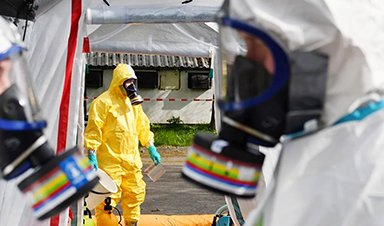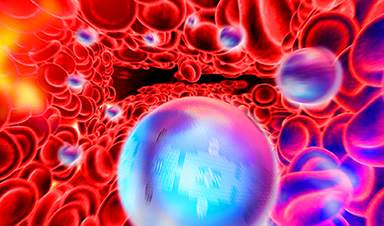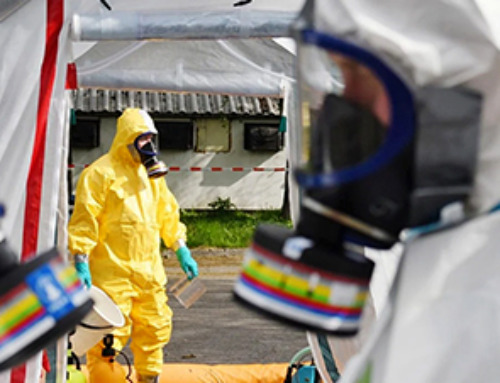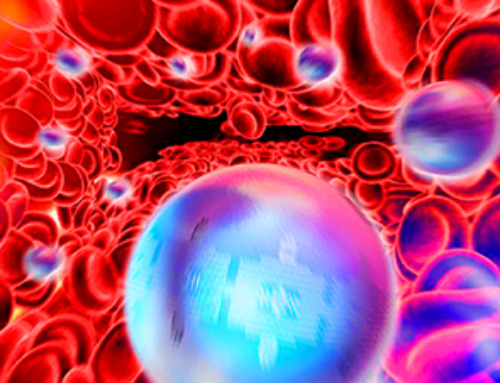New research reveals how smell and hearing interact in the brain to drive social behavior, using mouse maternal instincts as a model.
Imagine you’re at a dinner party, but you can’t smell the food cooking or hear the dinner bell. Sounds like a dream, right? What if it wasn’t?
“When we experience the world and interact with people, we use all our senses,” Cold Spring Harbor Laboratory Professor Stephen Shea says. “That’s true for animals and humans.” However, that’s not always the case in developmental disorders like autism. These conditions can affect how the brain processes incoming information, making it difficult to interpret the social cues that drive conversations, dates, and other interpersonal activities.
Exactly how such signals mix and influence each other in the brain isn’t well understood. To shed light on the subject, Shea and graduate student Alexandra Nowlan traced how smell and hearing interact in mouse brains during a maternal behavior called pup retrieval. This activity isn’t limited to mothers. It can also be learned by surrogates. Think stepmoms and babysitters.
 Neural pathways, stained neon green above, carry smell signals through the mouse brain from the basal amygdala to the auditory cortex. Credit: Shea lab/Cold Spring Harbor Laboratory
Neural pathways, stained neon green above, carry smell signals through the mouse brain from the basal amygdala to the auditory cortex. Credit: Shea lab/Cold Spring Harbor LaboratoryThe Role of the Basal Amygdala in Sensory Processing
In mice and humans, the BA is involved in learning and processing social and emotional signals. During pup retrieval, the team found that BA neurons carry smell signals to the brain’s hearing center, the auditory cortex (AC). There, they merge with incoming sound signals and influence the animal’s response to future sounds—like pups’ cries. Amazingly, when Shea’s team blocked maternal mice from accessing smell signals, their pup retrieval response almost completely broke down.
“We think what’s reaching the AC is being filtered through social-emotional signals from BA neurons,” Shea explains. “That processing can be impaired in autism and neurodegenerative conditions. We think many parts of the brain participate in this behavior and that it’s very richly controlled.”

Shea’s lab is now exploring how these brain regions connect and interact with one another. Their work may lead to a better understanding of how autism can affect a person’s ability to interpret social cues. But that’s just the beginning.
“The idea that we found a neural circuit that may allow emotional processes to directly interact with perception is very exciting to me,” Shea says. He’s not alone there. His research might yet provide answers to one of humanity’s oldest questions. How do our senses inform the ways we connect with one another and experience the world?
News
Fever-Proof Bird Flu Variant Could Fuel the Next Pandemic
Bird flu viruses present a significant risk to humans because they can continue replicating at temperatures higher than a typical fever. Fever is one of the body’s main tools for slowing or stopping viral [...]
What could the future of nanoscience look like?
Society has a lot to thank for nanoscience. From improved health monitoring to reducing the size of electronics, scientists’ ability to delve deeper and better understand chemistry at the nanoscale has opened up numerous [...]
Scientists Melt Cancer’s Hidden “Power Hubs” and Stop Tumor Growth
Researchers discovered that in a rare kidney cancer, RNA builds droplet-like hubs that act as growth control centers inside tumor cells. By engineering a molecular switch to dissolve these hubs, they were able to halt cancer [...]
Platelet-inspired nanoparticles could improve treatment of inflammatory diseases
Scientists have developed platelet-inspired nanoparticles that deliver anti-inflammatory drugs directly to brain-computer interface implants, doubling their effectiveness. Scientists have found a way to improve the performance of brain-computer interface (BCI) electrodes by delivering anti-inflammatory drugs directly [...]
After 150 years, a new chapter in cancer therapy is finally beginning
For decades, researchers have been looking for ways to destroy cancer cells in a targeted manner without further weakening the body. But for many patients whose immune system is severely impaired by chemotherapy or radiation, [...]
Older chemical libraries show promise for fighting resistant strains of COVID-19 virus
SARS‑CoV‑2, the virus that causes COVID-19, continues to mutate, with some newer strains becoming less responsive to current antiviral treatments like Paxlovid. Now, University of California San Diego scientists and an international team of [...]
Lower doses of immunotherapy for skin cancer give better results, study suggests
According to a new study, lower doses of approved immunotherapy for malignant melanoma can give better results against tumors, while reducing side effects. This is reported by researchers at Karolinska Institutet in the Journal of the National [...]
Researchers highlight five pathways through which microplastics can harm the brain
Microplastics could be fueling neurodegenerative diseases like Alzheimer's and Parkinson's, with a new study highlighting five ways microplastics can trigger inflammation and damage in the brain. More than 57 million people live with dementia, [...]
Tiny Metal Nanodots Obliterate Cancer Cells While Largely Sparing Healthy Tissue
Scientists have developed tiny metal-oxide particles that push cancer cells past their stress limits while sparing healthy tissue. An international team led by RMIT University has developed tiny particles called nanodots, crafted from a metallic compound, [...]
Gold Nanoclusters Could Supercharge Quantum Computers
Researchers found that gold “super atoms” can behave like the atoms in top-tier quantum systems—only far easier to scale. These tiny clusters can be customized at the molecular level, offering a powerful, tunable foundation [...]
A single shot of HPV vaccine may be enough to fight cervical cancer, study finds
WASHINGTON -- A single HPV vaccination appears just as effective as two doses at preventing the viral infection that causes cervical cancer, researchers reported Wednesday. HPV, or human papillomavirus, is very common and spread [...]
New technique overcomes technological barrier in 3D brain imaging
Scientists at the Swiss Light Source SLS have succeeded in mapping a piece of brain tissue in 3D at unprecedented resolution using X-rays, non-destructively. The breakthrough overcomes a long-standing technological barrier that had limited [...]
Scientists Uncover Hidden Blood Pattern in Long COVID
Researchers found persistent microclot and NET structures in Long COVID blood that may explain long-lasting symptoms. Researchers examining Long COVID have identified a structural connection between circulating microclots and neutrophil extracellular traps (NETs). The [...]
This Cellular Trick Helps Cancer Spread, but Could Also Stop It
Groups of normal cbiells can sense far into their surroundings, helping explain cancer cell migration. Understanding this ability could lead to new ways to limit tumor spread. The tale of the princess and the [...]
New mRNA therapy targets drug-resistant pneumonia
Bacteria that multiply on surfaces are a major headache in health care when they gain a foothold on, for example, implants or in catheters. Researchers at Chalmers University of Technology in Sweden have found [...]
Current Heart Health Guidelines Are Failing To Catch a Deadly Genetic Killer
New research reveals that standard screening misses most people with a common inherited cholesterol disorder. A Mayo Clinic study reports that current genetic screening guidelines overlook most people who have familial hypercholesterolemia, an inherited disorder that [...]





















